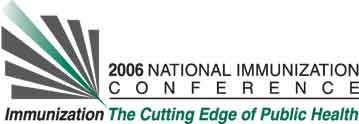John P. Pitman1, Barbara C. Canavan
2,
James L. Tobias3, Nathan E. Crawford
2, Justin Weisser
2, Donald Dumont
2, James Gaudino
2, and Richard Schieber
1. (1) National Immunization Program/Health Services Research and Evaluation Branch, Centers for Disease Control and Prevention, 1600 Clifton Road, MS E-04, Atlanta, GA, USA, (2) Office of Family Health, Immunization Program, Oregon Department of Human Services, 800 NE Oregon Street, Suite 370, Portland, OR, USA, (3) Centers for Disease Control, National Immunization Program, Science Applications International Corporation, 12 Corporate Square Blvd, Atlanta, GA, USA
Learning Objectives for this Presentation:
By the end of the presentation participants will be able to:
1. Visualize immunization pockets of need on an electronic map.
2. Understand how a Geographic Information System (GIS) displays data from an immunization registry.
3. Appreciate the potential research and programmatic solutions available from a GIS linked to a robust immunization registry.
Background:
The national coverage rate for the 4:3:1:3:3 immunization series exceeds 80%. However coverage remains varied at the state and local level, with some jurisdictions reporting rates below 70%. Identifying areas of low immunization coverage has traditionally involved time-consuming and costly surveys, demographic proxies or retrospective analyses.
Objectives:
GIS technology has emerged as a tool to manage and display immunization data, but a lack of large electronic immunization datasets has limited its use. Electronic immunization registries may bridge this data gap. By linking a GIS model to registry data representing more than 90% of an actual population, we sought to develop and demonstrate a rapid and accessible tool for identifying local pockets of need.
Methods:
We used the Oregon ALERT registry to collect records for 2602 patients aged 18-35 months receiving immunizations from providers in one county. These data were assigned geographic coordinates based on the patient's home address and mapped using GIS software. A one square mile grid was developed to identify neighborhoods where immunization coverage for the 4:3:1:3:3 series was above or below the county average (66%).
Results:
In an 870 square mile area, 24 square miles were identified as potential pockets of need.
Conclusions:
The tool generates a detailed, yet anonymous, image of immunization needs when linked to a registry containing records for more than 90% of the children residing in the target area. Compared to larger-area geographic analyses (e.g., using Census tracts), this tool allows users to target interventions more effectively.
See more of Posters
See more of The 40th National Immunization Conference (NIC)

